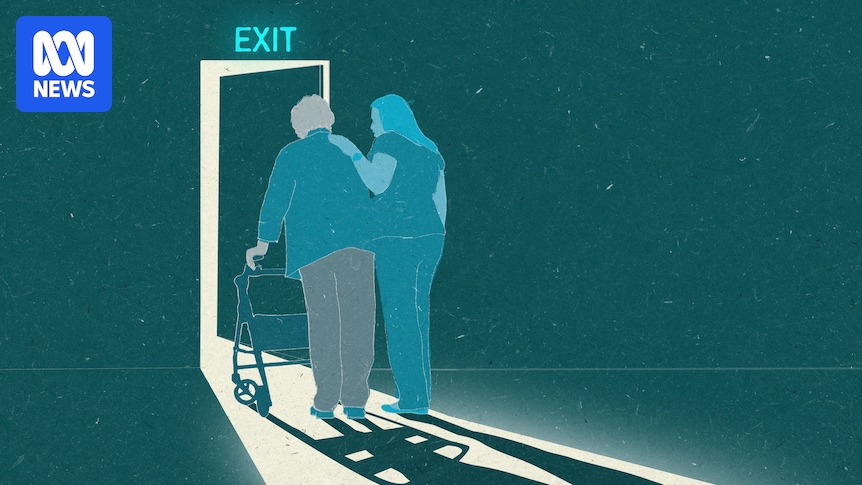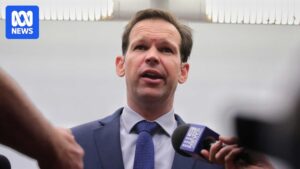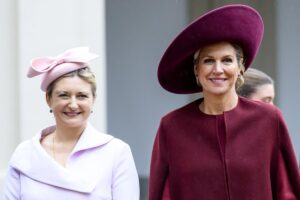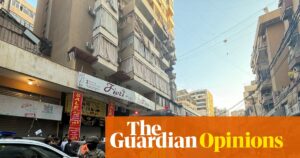
For many, voluntary assisted dying symbolizes control over how life ends. Yet, dying well encompasses more than those final hours. This is where a deathwalker like Zenith Virago can offer invaluable support.
A few days before her 37th birthday, Zenith Virago found herself under the harsh glare of fluorescent lights in a hospital morgue, confronting a dead body for the first time. That morning, her close friend Sylvia had suffered a brain aneurysm and died suddenly in her garden. Alongside Sylvia’s husband Richard and their teenage daughter, Virago went to identify her friend’s body.
Upon arrival, the trio saw Sylvia lying on a metal bed, draped in a sheet. “She just looked like herself,” Virago recalls. “I started to stroke her head, because that was a natural, instinctual reaction. I was having a silent conversation with her in my mind… ‘I just love you. Thank you for being in my life.’ I left my hand on her crown, and in that moment, it was so clear to me — her spirit was leaving her body.”
As they left the hospital, Virago was struck by an overwhelming clarity: Sylvia’s deathcare should be carried out by those who loved her. Virago remembers saying to Sylvia’s husband and daughter, “We could do this ourselves. We don’t have to give her to strangers.”
And so, they did. Zenith completed the paperwork, friends washed and dressed Sylvia’s body, and handmade a coffin. They kept vigil and held a ceremony. “Then we carried her down to the crematorium… and together, we pushed her in,” Virago says. The process honored Sylvia “in a way she would have loved,” Virago believes, and helped her community grieve. The experience was life-changing.
The Rise of Family-Led Funerals
Someone dies in Australia about every three minutes, creating a constant demand. The funeral industry, worth about $1.6 billion annually, is dominated by just two major players in Australia. Yet many say the process often feels standardized and sanitized.
When Sylvia died, allowing such a deep level of involvement from friends and family was uncommon. These days, it’s what is described as a family-led funeral, and Virago is widely regarded as a pioneer in the national and international movement to reclaim deathcare from profit-driven businesses.
She founded the Natural Death Care Centre, a NSW-based charity, and over three decades has trained about 3,000 “Deathwalkers” — or “death doulas” — who support families through the dying, death, and bereavement of loved ones with both practical guidance and calm presence.
More people are pushing back against expensive, cookie-cutter models of death and demanding greater choice and agency. For some, it is voluntary assisted dying (VAD) which offers that control — the right to decide how much suffering to endure at the end of life — and is emblematic of a good death. For others, the idea of a “good death” goes further, aligning with the death positive movement, which challenges cultural silence around dying and seeks to reclaim both the conversation and the practices of death care.
Redefining a “Good Death”
But the question remains: What does a good death look like in contemporary Australia?
Virago views the mainstream funeral industry as “patriarchal” and “terrified of emotions.” In contrast, she focuses on returning deathcare to families through “pre-need” education. This means learning about dying and considering funerals in advance — rather than facing end-of-life choices in a crisis.
In some cultures, bringing a loved one’s body home before the funeral is a familiar ritual. Virago notes that in Australia, few realize they too can request to keep the body at home for several days and take on much of the deathcare themselves. “People have the power, but they have to work it,” she says. “They have to participate.”
Drawing from her wide experience, Virago, somewhat unsettlingly, likens the moment of death to orgasm. She explains both are a form of energy release: “When that one thing occurs, there’s an expansion, and you become part of everything… From all my experience of being with dying people, that’s how I imagine it to be — you expand out of your body. You are dissolving into the universe.”
For her part, Virago rejects the notion of a “good death.” “As an educator, as a person who sits with people who are dying, I don’t find the phrase helpful,” she says. “I think it puts a lot of pressure on the dying person and the family. Each death has its own alchemy. It has its own internal set of circumstances.”
Instead, she opts for “dying well” and argues communication is the key. This is where deathwalkers step in. “You’re sitting at that kitchen table. It’s happening. It’s now,” she says, evoking the moment a person’s dying is underway.
“Sometimes it’s trauma work to get family members to not miss that death, because otherwise that trauma is just going to compound all the way along.” Families can fracture under the strain, and part of the work of a deathwalker is gently mediating so grief doesn’t harden into long-term harm.
To Virago, the deathwalker’s role is to practice “being kind but being courageous and saying what needs to be said.” Palliative care nurse practitioner Kate Reed echoes that spirit, stressing the value of honest conversations, early: “The sooner we start these conversations, the better… we all know we’re going to die, so let’s have a chat about it now.”
Challenging the Status Quo
For Anne and her family, a good death meant not only easing the suffering of her husband, Steve, but honoring his wishes and taking an active role in his deathcare and farewell. “He taught us how to die well,” Anne says of Steve, who spent his last hours surrounded by his wife and three children at Canberra’s palliative care facility Clare Holland House, in July last year.
Even as his breathing slowed, Steve waited until his brother and sister arrived from the airport. “He never complained,” Anne recalls. “He just accepted everything.” Anne and Steve’s eldest daughter, Sarah, nods in agreement: “It was very beautiful because we were all just there, holding his hand and helping him along.”
Steve, 65, was a gentle, inventive aeronautical engineer who loved making things and spending time with his family. After his stage four pancreatic cancer diagnosis in April 2023, Anne told her husband: “Don’t think you’re dying from it. We’ll live with it.” This resulted in “precious time” — long conversations together, including the details of how he hoped his post-death farewell would unfold, and trips to Broome and Uluru.
While Steve was still alive, Anne happened upon a newspaper article announcing a new Canberra-based branch of Tender Funerals. The not-for-profit, community-led organization established in NSW almost a decade ago encourages families to be as involved as they wish — from washing and dressing the body of the person who has died to creating personalized services far outside the bounds of a traditional, commercial funeral package.
By coincidence, the ACT branch was set to be housed in the old RAAF Officers’ Mess where Anne and Steve had first met. Although Tender wasn’t yet open, Anne wrote to the women who were setting it up, and they agreed to help with Steve’s impending funeral. Anne couldn’t wait to tell her ailing husband. “He couldn’t believe it,” she says. “He was so happy. He joked the Officers’ Mess was his first and last posting.”
In accordance with Steve’s wishes, the family embraced Tender’s hands-on model. Together the three of them, with assistance from a staff member, washed and dressed his body. Reflecting on the experience, Sarah says right before death, Steve made his hopes clear: “It was one thing he really wanted. He said it in the last few days: ‘Will you wash me?'” So, I think we all felt the same — we were really there for him.”
The family also painted Steve’s chosen cardboard coffin in their garden at home — the grandchildren decorating the lid, the adults the base. The service was intimate, creative, and profoundly personal. Anne even surprised herself by giving the eulogy. Looking over to her mum, Sarah smiles: “She didn’t realize how strong she was until all this happened.”
For Anne, the experience of making Steve’s funeral their own was profoundly healing: “It’s what he would have loved. He would’ve been so proud.” Steve’s death could be seen as a “good death.” He received palliative care to ease his suffering, voiced his wishes beforehand, and his family were able to honor them.
Understanding the Complexities of Death
Yet the idea of a “good death” is subjective. The way you define it depends on who you ask. Palliative care nurse Reed is also director of the Voluntary Assisted Dying Implementation Taskforce for ACT Health and is completing a Masters of Law at the Australian National University. The ACT’s VAD legislation comes into effect next month, on November 3.
Reed stresses that defining a good death isn’t just about the final hours of life, but the preparation and care in the weeks before. “A good death has got very little to do with the death itself,” she says. “It’s got a lot more to do with the build-up and what happens before that.”
Listening to patients and families — without projecting practitioner assumptions — is key. As Reed puts it: “…really, truly listening to what is important for that person… and not projecting any of your own feelings onto that, that’s really important as a practitioner in this space.”
She believes the absence of information can traumatize families: “One of the really important things is to tell people what death looks like, to tell people the hard stuff… giving them that sort of information helps prepare them for what they’re going to see and hear.”
In practice, Reed is referring to factors such as changes in a dying person’s breathing, as well as their skin color, temperature, and consciousness — and sometimes, even the sounds or smells of a body shutting down.
A 2021 Lancet review found effective communication and relationships with healthcare providers — as Reed suggests — is just one of 11 tenets which make up a “good death.” The paper also points to factors such as relief from suffering, personal agency in how and where one dies, connection with loved ones, and the chance to find meaning through cultural or spiritual rituals — alongside, for some, the right to end one’s life.
The Complexities and Limitations of VAD
With ACT on board next month, VAD will be legal in every Australian state and territory, except the Northern Territory. Someone who understands its legal and ethical terrain, both here and overseas, is Dr. Katrine Del Villar, a senior lecturer at the Queensland University of Technology and specialist in end-of-life law.
The way Del Villar sees it, assisted dying is about agency at the end of our lives: “I think what Australians want… is choice and control… and I think that what’s fueling the desire for VAD is fear of loss of control.”
However, she notes demand for VAD is strongest among white populations, whereas culturally diverse groups — and Indigenous Australians — are often less supportive. “It’s very much a product of that Western liberal approach… It’s an option that is valued by some people more than others,” she says.
Public data on national VAD access is limited, but does suggest it is used disproportionately by metropolitan, Australian-born, English-speaking people with high health literacy. Demand also varies from state to state. In Queensland, demand is strong – believed to be because of broader eligibility criteria – and half of applicants living outside cities.
Emerging data also shows a gap between those who qualify and those who ultimately use VAD. A report by Go Gentle found 5,338 Australians accessed VAD in 2024, but fewer than half of them — 2,467 people — went on to die using it. For many, Dr. Del Villar explains, simply having access is enough.
“It’s very much a security blanket for some people, that if things get bad, I’ve got an out and it’s a quick out,” she says. “It enables them to go through that disease progression and… enjoy the remaining time.”
In the end, she believes the law is a blunt instrument, ill-equipped to deal with the human “messiness” of dying. “The only way it can deal with complexity is to provide discretion. So, then that’s just… passing the buck to someone else,” Dr. Del Villar argues. “It’s very subjective.”
For example, in Australia, people with dementia are excluded from VAD because the law requires full decision-making capacity right up until the medication is taken. Dr. Del Villar acknowledges the frustration this may cause — but warns that loosening the rules creates a new set of dilemmas.
In the Netherlands, she notes, broader criteria can push people to die earlier than they otherwise would: “With dementia… the evidence from the Netherlands is… people are faced with a choice. Do I choose to end my life early… or do I wait knowing the doctor won’t provide what I want at that later time?”
She adds: “I don’t know that an early death is the answer for fear of aging or decline.”
Although Australia’s VAD laws are conservative compared to countries like Canada and the Netherlands, Dr. Del Villar believes that’s justified. “If you don’t restrict it to people with a terminal illness, I think you shouldn’t restrict it at all. And I don’t want to live in a society where anyone can say, ‘I’m done. I’m ready to end my life.'”
ACT Health’s Kate Reed concurs — VAD doesn’t offer a one-size-fits-all solution to the complexity of dying: “I do not see it as a panacea. The legislation doesn’t see it that way, either. It was not built that way, but it is built for us to have an option.”
Interestingly, research produced by Dr. Del Villar and her colleagues in 2020, concluded that in Victoria a majority of “bad deaths” — such as suicides, assisted suicides, and mercy killings “would not have met the eligibility criteria for VAD under the Victorian model, and thus ‘bad deaths’ will continue to occur.”
According to the Go Gentle report mentioned above, of those who accessed VAD in 2024, approximately 80 percent were already receiving palliative care. This backs up Reed’s belief that “palliative care and voluntary assisted dying go together” (and are not alternatives).
For her part, Dr. Del Villar warns against the illusion that everyone can have a “good death.” “We’re trying to control the uncontrollable, really,” she says.
What Happens When It Goes Wrong
For Victorian man Glenn, death was marked by misery, not peace. On a video call, his partner of 13 years, Denise, describes him as an innovative stained-glass artist with work in churches, schools, and homes across the country. Glenn, who died at 85, was also a former academic who made friends easily.
“He was very politically and socially engaged,” Denise says. “You could have a conversation about anything. It was never the mundane.”
Although close, Denise and Glenn lived apart — she in the Yarra Valley, and he in the small rural community of Cavendish, where he thrived “off the grid, in a small, sustainable, beautiful house designed by an architect friend of his.”
From 2017 onwards, his health collapsed: first a heart attack, then a neurological condition, followed by strokes, and finally a severe COVID infection. Denise describes Glenn’s decline this way: “He was lucid. He didn’t have any problems with his memory or speaking or anything like that, but he couldn’t live independently any longer. He had a lot of trouble walking and





